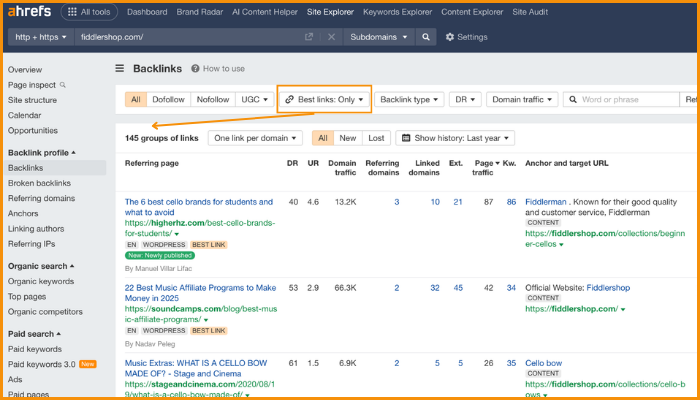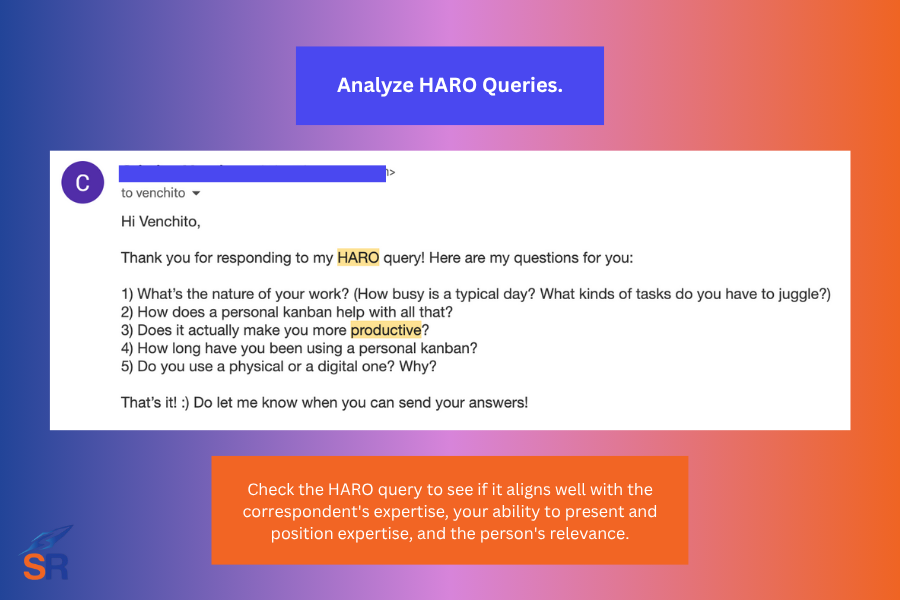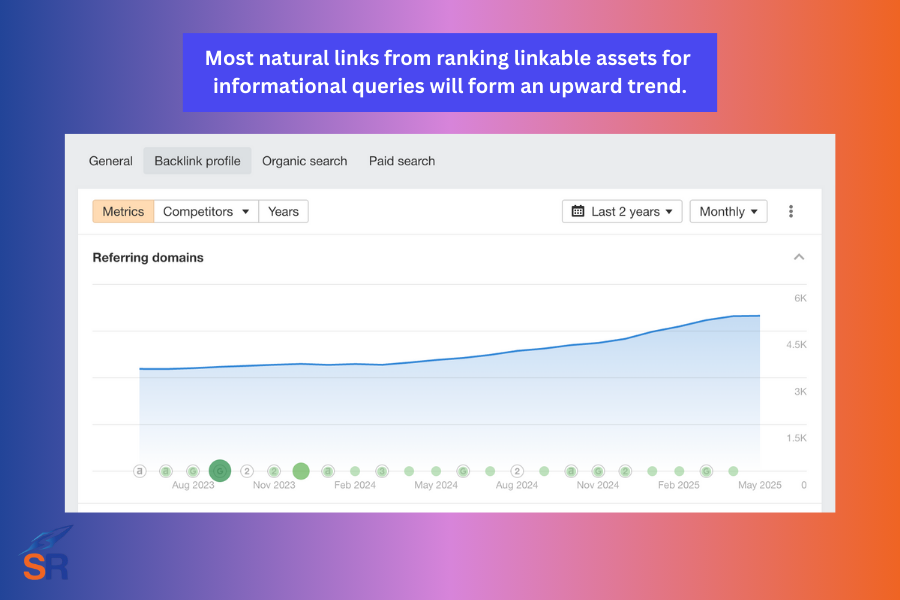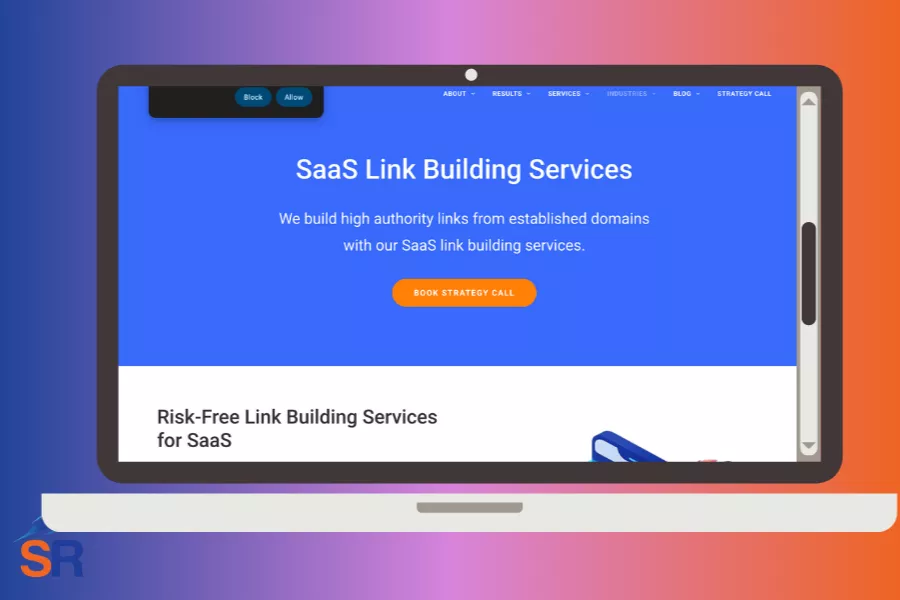Google obviously favors brands because people trust them, which results in favorable rankings on search engine results pages (SERPs).
As established brands benefit from strong domain signals, they consistently receive branded searches, multiple brand mentions across the web, and a robust backlink profile, with several authoritative sites referencing their work through inbound links.
We even see average content hosted on high-DR sites ranking within days of being indexed, demonstrating the power of branding in SEO.
But what if you’re doing SEO for new websites?
It’s often an uphill battle to compete against search giants in your industry. It’d take years, let alone the resources you have to invest appropriately to ensure you’re getting the right ranking spots.
The best way to approach your SEO strategy is to go narrow and deep, rather than trying to rank for every head term. You hyper-focus on one topic cluster at a time, covering every relevant subtopic with helpful content.
Not only are you sending relevant signals to search engines this way – about the clarity they need to associate your website with a given area of expertise. But as your topical coverage grows, so does your brand visibility, trust, and ranking potential (to even rank for more competitive keywords).
Contents
ToggleHow to Build Topical Authority?
Below are the steps to build topical authority from the ground up, with examples from our own test sites to show you how it works:
1. Organize Your Content Using Topic Clustering
One strategic SEO approach is to create topic clusters to plan out your content and create a smart internal linking structure.
Topic clustering is an SEO-driven content strategy that organizes content around a central theme by linking a main pillar to multiple supporting cluster pages. Each cluster article (also called “clusters”) targets a specific subtopic, while the pillar page (also known as “main hubs”) covers the broader theme.
Topic clustering is critical when building topical authority, as it helps:
- Strengthens your position for AI search – AI crawlers look for authoritative sources when scraping content, so establishing yourself as a trustworthy source through complete topical coverage can increase the likelihood of surfacing in AI results.
- Improves topical relevance – connecting related content strengthens Google’s perception of your site’s expertise on the subject.
- Better UX – your target users can easily navigate to what they’re looking for, between related articles (increasing time on site and user engagement).
- Smarter internal link equity – easily do internal linking between main hubs and cluster pages, distributing link equity across your site, assisting more important pages to rank for their individual keywords.
- Fills content gaps – covering all relevant subtopics that address every stage of the user journey and search intent, particularly those near the buying decision stage (MOFU and BOFU).
- Improves crawlability – a clear cluster format makes it easier for search engines to crawl and index your content.
If you want to go deeper with these, here are extensive resources on topic clustering:
Organize topic clusters in a spreadsheet (or any project management tool) by including the target URL structure, content format/type (i.e., list type, guide article, review).
You can also use AI to automate the process by giving you actual topic clusters you can actually use (or just use as an inspiration for your target content topic).
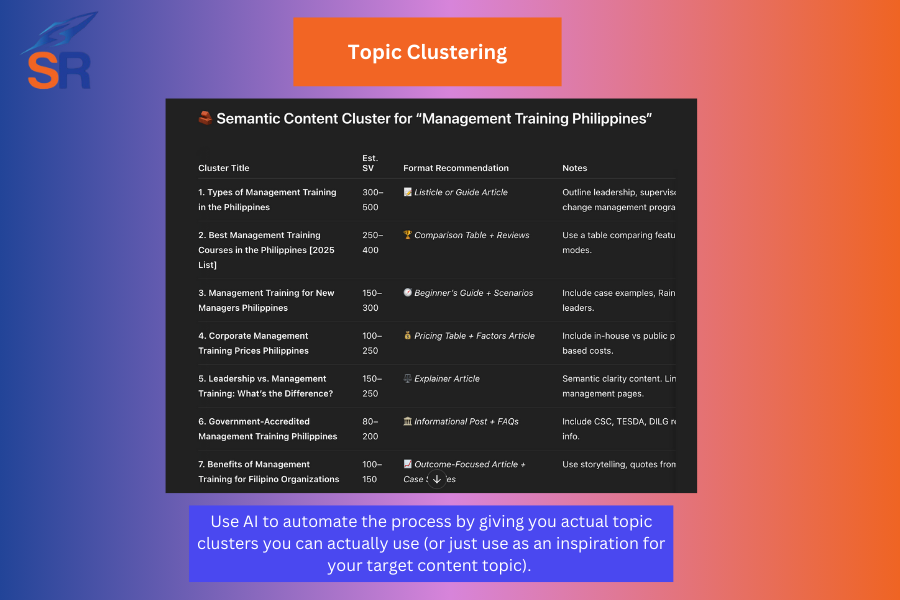
You may also want to match it to keyword research tools, such as Ahrefs or SEMrush, to get a quick look at the current search volume for each topic. It will give you ideas on what keyphrase to optimize each cluster page for.
Use your human judgment when picking cluster topics, as you don’t want to base it solely on search volume. In many cases, most subtopics may have lower search volume, but they are significant enough to create content around (as they will cover a content gap in the industry compared to your competitors).
2. Build Strong Pages with Proper Topical Structure
Once you organize your topics into clusters, the next step is to structure each pillar and cluster page properly.
Structure the page around the searchers’ intent, needs, and semantic expectations. And the best way to start is to do a Google search for the topic you’re writing about.
Come from the perspective of a typical Google user, and ask yourself, “What exactly am I looking for this topic?”.
Jot down ideas and let them inspire you when structuring your content for satisfaction.
Here’s how we structure our content for maximum topical strength.
Satisfy Search Intent.
Placing the most important points at the top of the page is one way to satisfy your searchers’ needs. Avoid burying the main answer deep inside your article.
Summarize key takeaways early, using clear lists, TL;DR sections, or quick bullet points, just make sure the search can easily find what they’re looking for. By doing so, you reduce the chances of searchers pogo-sticking (bouncing back to the search results and finding another relevant page, which indicates you didn’t meet the searcher’s intent and needs).
Make a Succinct Content Outline
One of the fastest and most effective ways to build a comprehensive content outline is to study how top-ranking pages organize their content. At the very least, Google has ranked this content. Having your asset matched to what’s already ranking is a good way to start – then improve it as you go.
You can use free tools like Detailed.com to instantly view the meta tags, H1s, H2s, and key structural elements of the top-ranking pages for your target query – you’ll do so by individually going to each page in Google’s SERPs.
Rebuild a similar structure but make it more comprehensive by addressing deeper needs, as well as adding additional headings and subsections that the top pages may have missed.
There are several content optimization tools available that automate the entire process; a few notable ones include Surfer SEO and Ahrefs’ AI Content.

Incorporate FAQs and FUQs
Adding FAQs has been a standard for many publishers, which I sometimes think they have used only to make content longer without adding substance to the topic.
But you can actually go deeper in your content by adding FUQs (Frequently Unasked Questions).
FUQs are questions that users haven’t asked widely yet but are likely to as the topic matures or user sophistication grows.
These are also types of questions that are starting to surface more often inside AI-driven searches. And by incorporating them early on, you get the benefit of making your content more discoverable for future new PAA boxes and emerging searches on both traditional search and AI.
One of the best tools for finding FUQs, especially on bottom-of-the-funnel pages, is Xofu, a new tool created by the Citation Labs team.
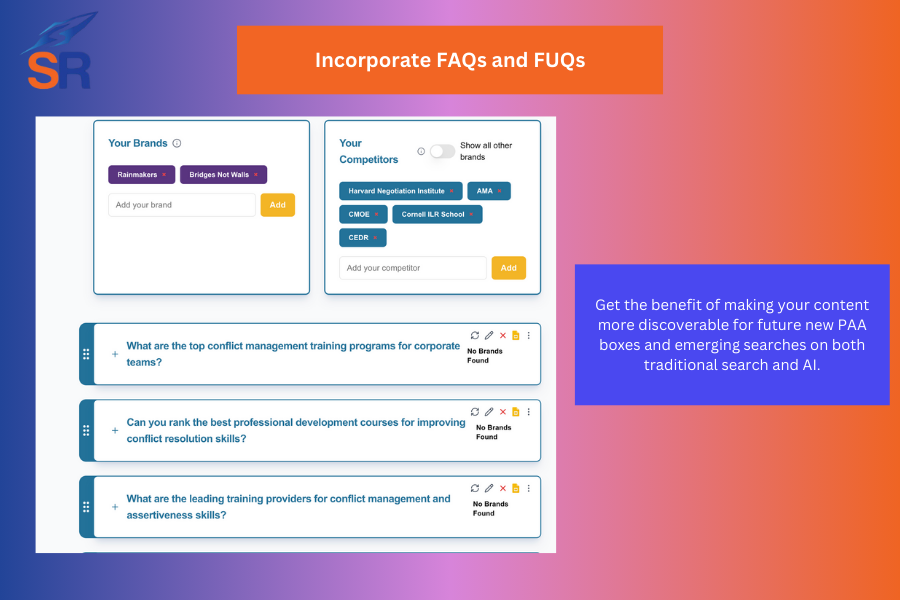
You can also use AI to scan for related but less common questions when you search your topic (use your human judgement based on your audience research, which topics are worth incorporating in your content).
3. Expand Content with Greater Topical Depth
As the term suggests, topical depth means covering a subject thoroughly across all layers of user intent, experience levels, and situational needs. And by accomplishing this, you develop your website into a comprehensive and go-to source of information in your space, giving other publishers a reason to cite you when writing their content.
You can start with the most basic method, which is to align your content to different stages of the marketing funnel (TOFU, MOFU, and BOFU).
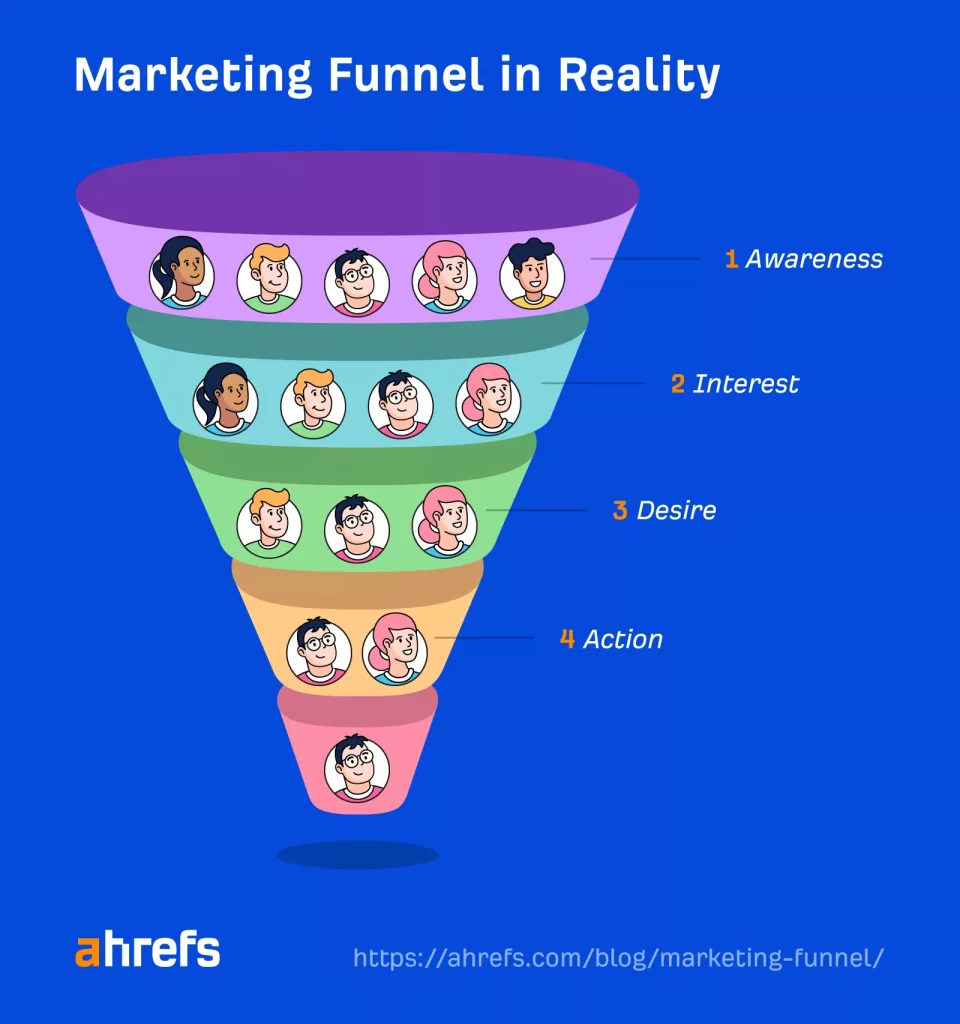
Although we’ve focused heavily on creating conversion-oriented content lately to maximize SEO investment (i.e., MOFU and BOFu content), as it not only captures significant search traffic but also actual organic revenue.
Publish Next-Step Guides
I learned this from Jason Acidre, who found that targeting higher expertise levels is an effective way to differentiate your content from other competing publishers, as most are now targeting beginner audiences.
You can start with introductory guides to capture entry-level searchers, but have follow-up layers of content assets for intermediate and advanced searchers.
This is also a good way to do internal linking by offering your beginner’s guides the next steps of learning (i.e., 102).
Include Microsemantic Details
What is microsemantics?
Microsemantics refers to the fine-grain pieces of information that real users often include when they search, including numbers, audience types, locations, timeframes, and specific use cases.
These are exact nuances that your competitors may have missed in their content, but will be your true advantage if you’ve taken the time to include them in your page.
By strengthening semantic connections within your content, you help search engines better understand the full scope of your topic, which in turn increases your site’s topical relevance.
Readers would also instantly recognize that your content is tailored to their real-world context, as you speak to the exact scenario they’re currently facing, making your content more engaging and reliable to consume.
And with how AI has evolved through deep research, you give your pages a better chance of being cited during deep AI-driven content scraping and synthesis (you appear in deep research answers from AI).
Here are examples of microsemantic elements you can insert into your content:
- Price ranges (e.g., “Management training programs typically cost between ₱50,000 to ₱120,000 for a 2-day course in the Philippines”).
- Timelines (e.g., “Participants often see improvements in leadership skills within 3 to 6 months after completing a management training program”).
- Industry examples (e.g., “Management training tailored for the healthcare sector vs. retail industry”).
- Professions or user types (e.g., “Best management workshops designed for newly promoted supervisors”).
- Geographies (e.g., “Demand for management training in Metro Manila and key provincial cities in the Philippines”).
- Target audience specifics (e.g., “Leadership courses focused on frontline managers handling customer-facing teams”).
By delving deep into your content’s topical structure with microsemantic details, you increase your site’s EEAT signals, as only authors with expertise and experience can dissect information and clearly identify what truly matters to their target audience in their content.
Cover Unique Angles
Identify what your competitors have missed and fill those gaps in your content. When your competitors usually stick to the obvious points just to increase word count (i.e., adding too many basic definitions, unclear how-tos, or surface-level advice), you take advantage by including unique sections, perspectives, or details that are not present yet in many competing articles.
Focus on missing elements, such as:
- Deep user cases or applications that competitors have not discussed (i.e., leadership training for mid-level managers)
- Contrarian views or alternative approaches that offer different solutions (best for niches with different ways to attack the problem – i.e, “home improvement hacks”).
- Common mistakes or misconceptions that no one else is warning about/
- Share topics for new learning with other levels of the audience.
Most SEO professionals view content gap analysis as simply filling keywords that other competitors haven’t covered yet, but it also primarily involves filling missing angles to make your content a stronger endpoint for searchers, thereby providing higher satisfaction for your target audience.
You can also use the missing elements above when writing your opening hook in your content, immediately capturing your audience’s attention and showing them how your content differs from the rest, even without skimming the table of contents.
Include Entities
I won’t delve into this since it’s already covered in many SEO guides. Basically, you want to naturally mention relevant tools, brands, personalities, organizations, and key concepts within your content, as these real-world references can enhance the semantic richness of your page and help search engines better understand its topical relevance.
Create Your Own Frameworks (or Bundle Existing Ones)
Developing frameworks and models is a standard practice when crafting training designs for the talent development space, which I adopted as a critical component in content publishing. Whenever I create helpful content for my test sites and clients, I replicate the same content creation strategy.
One upside of creating frameworks is that they simplify learning for my audience, as they present the topic in a more strategic and structured way.
If you’re looking for where frameworks make sense to create or bundle with, here are a couple of elements of topics where it matters the most:
- Stages – Making complex processes easier to follow, step by step. (Example: Leadership development mapped into Assessment → Planning → Implementation → Evaluation.)
- Tools – Grouping recommended tools into a framework simplifies decision-making and standardizes the execution path for users. (Example: Using DISC assessments, leadership simulators, and 360° feedback tools in a management program.)
- Metrics – Defining clear metrics inside a framework shows users how to measure success and track real progress over time. (Example: Tracking leadership promotion rates 90 days after program completion.)
- Timeframes – Time-based checkpoints structure expectations, helping users stay accountable to deadlines and avoid procrastination. (Example: Reviewing leadership reinforcement plans every quarter after training.)
- Benchmarks – Before-and-after comparisons fit naturally into frameworks, making improvements or gaps visible and motivating action. (Example: Comparing team productivity metrics before and six months after management training.)
- Critical Actions – Highlighting essential actions gives users a focused execution plan, rather than overwhelming them with general advice. (Example: Requiring 1:1 coaching sessions within two weeks post-training.)
- Progress Indicators – Milestone indicators within a framework reinforce momentum and show users how to recognize early wins. (Example: Completing leadership application projects within 60 days of training.)
- Scenario Applications – Scenario-based variations make frameworks adaptable, helping users apply concepts in different real-world situations. (Example: Applying conflict management techniques during team reorganizations.)
- Audience Variations – Tailoring frameworks to different audience types ensures relevance, personalization, and better user engagement. (Example: Offering different leadership tracks for supervisors versus senior managers.)
- Support Systems – Including support layers (like mentors, coaches, or peer groups) strengthens the framework by building accountability and sustainability. (Example: Forming peer learning groups for leadership trainees.)
- Outcome Expectations — Anchoring a framework around defined end goals keeps users focused on results, not just activities. (Example: Setting a target of achieving 80% manager satisfaction scores post-training.)
- Adaptations for Scale — Frameworks that adjust based on team size, budget, or resources make your models scalable across different user needs. (Example: Modifying leadership workshops for teams of 5 versus teams of 50.)
- Skill Progressions – Layering skill-building stages into frameworks helps users advance systematically from beginner to expert levels. (Example: Moving managers from basic delegation skills to advanced strategic decision-making over 12 months.)
4. Cover Topics Fully to Strengthen Topical Coverage
What is topical coverage?
Topical coverage is how broadly and completely your entire site (or section) covers all the important and related topics in a domain compared to competitors.
By widening your content scope, you increase your content gap against your competitors, helping you to capture a bigger search market by ranking for relevant keywords they’re not currently dominating.
Content Gap Analysis
Start by analyzing the topics your competitors cover by simply doing a manual Google search for them, using the site:domain.com search operator and the topic keyword. Adjust your topics based on how specific or broad your site’s content theme (i.e., the niche you’re trying to build topical authority in).
You can also run a content gap analysis comparing your site against your top competitors. Use tools like Ahrefs’ Content Gap Analysis or SEMRush to find topics your competitors are ranking for that you haven’t covered yet.
Review your topic hub structure and identify where you can incorporate topics identified from content gap analysis.
Emerging Keywords
Emerging keywords are often early signs that your site is gaining more topical relevance for new queries for which your pages are currently ranking.
Go to Search Console to find keywords that are relevant but not fully addressed by existing pages, which deserve a dedicated content piece.
Anonymous Queries
Pro Tip: Uncover more queries your pages ranked for but haven’t been revealed directly in Search Console. Use Ahrefs’ Anonymized Queries report, located in the GSC section, to surface hidden keyword opportunities.
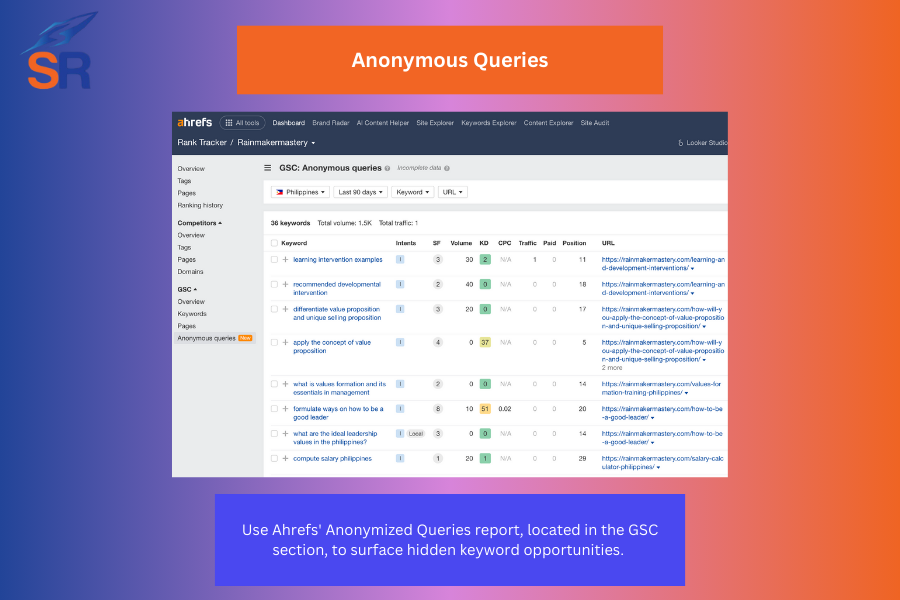
5. Increase Content Velocity to Accelerate Authority
What is content velocity?
Content velocity refers to the pace and volume of publishing, which is crucial for establishing topical authority.
Data-driven Approach to Content Velocity
Ross Hudgen’s approach to estimating the target content volume each month is a strategic content marketing play. Given that you’ll be investing resources in every content piece (research, time, design, etc.), it’s essential to back up your efforts with data to ensure you’re not just meeting random content volume goals.
Use Ahrefs’ Organic Pages view to see how many valuable pages your top competitors are creating. Ahrefs only shows pages that it has indexed in its database and that appear in the top 100 keywords.
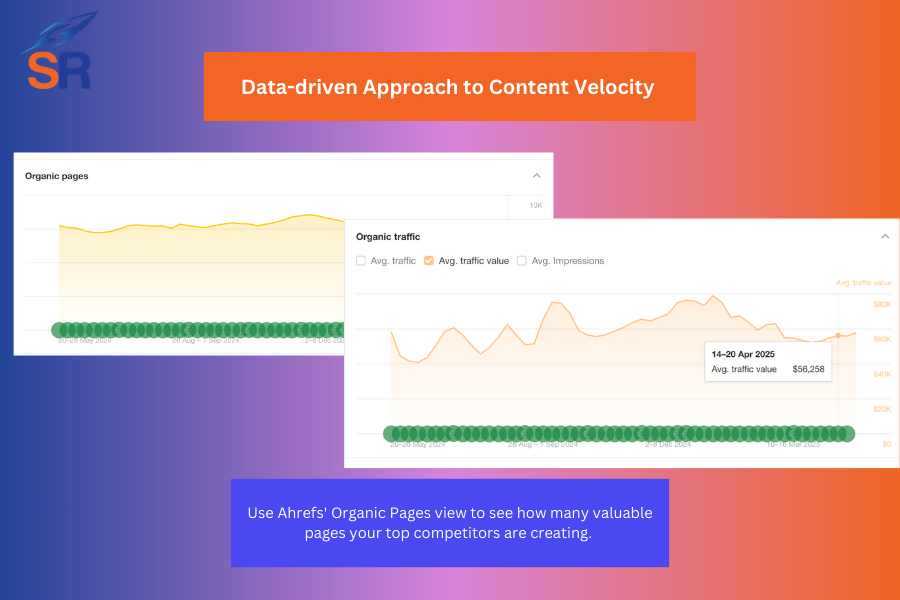
It’s a good metric to see to help you plan realistically against your market. For instance, if a competitor is publishing 700 posts a year (that’s around 58 new posts per month) – you can use it as one factor in benchmarking content volume.
Consider other relevant factors as well, such as traffic costs and your team’s executional capabilities (how quickly your team can create content every month without sacrificing quality).
For traffic value or cost, you can use Ahrefs or SEMrush to see how much your competitors’ content is worth. Then, tie your content velocity back to the number of relevant, high-quality topics that have business potential.
Lastly, consider how confidently your team can produce helpful content within the target volume. After all, you want to ensure every content piece passes your own editorial standards, so all of the pages would positively impact each other’s rankings by building your site’s topical authority.
Match Content Velocity to Your Site Authority
Another method to determine content velocity is to consider the reality of your site’s authority (how many indexed pages do you currently have on your site for the topic (s) you want to build topical authority in)?
For a new or low-authority site:
Focus first on publishing content for winnable, low-competition keywords. You can use the “Avalanche Strategy”, where you start slowly publishing content, capturing smaller topics, and building trust for your pages one step at a time.
Be careful not to flood your site with hundreds of pages overnight without quality control or topical structure.
Publish regularly at a consistent pace so that Google sees it as a sustained effort, not just a one-off.
For an established, high-authority site:
Larger content rollouts are viable for established websites (e.g., with 300+ pages over a few months), as Google already associates your domain with trust and relevance. You can expand aggressively into related topic clusters to further widen your topical authority while still reinforcing existing domain strength.
Refresh and Update Content
It’s a strategic content marketing technique to increase content volume, but it’s equally important to freshen and update existing content to maintain the topical strength of your site.
As you grow topical authority with new content assets (“outward approach”), you update existing content assets to satisfy searchers (“inward approach”) – to continuously send positive freshness signals to search engines, which they reward through better rankings.
It would be easy if you had a couple of pages to update, but if you have a large website with hundreds or thousands of pages, which one should you prioritize for content freshness?
You begin by first identifying topics with a shorter content freshness distance. Use the Freshness Distance Calculator to estimate how critical content freshness is for a given search query or topic – do it for your primary keywords first, then eventually for your secondary keywords – ones that also critical to your business.

Then, organize it by adding a column for “freshness distance” (i.e, how many updates are needed to update the content).
Include it as part of your regular content audit to first look at pages with the shortest freshness distance.
6. Micro-Authority Link Building
If you’re a fan of this blog, you’ve heard me say this several times, that link building can significantly impact your topical authority, as you build links (votes) from other trusted and authoritative websites (which Google considers to be a strong factor in determining which site is a credible, real, and trustworthy).
I’ve written several link building guides on how to build backlinks:
But here are the ones you may want to explore in building micro-authority through link building:
- Get exposure and relevant links by appearing on niche podcasts in your space. You can pitch to be a guest or have your allies interview you on their podcast shows.
- Attract interview opportunities by being active on social media platforms and responding to topical, relevant questions through social commenting. With this, you’re building radars for mid-level influential content creators to invite you to their show or ask you pertinent questions for their content.
- Publish more linkable assets to show expertise and build your personal brand – ensure you have a solid author bio that showcases your experience and expertise as an author and industry leader.
Topical authority is built brick by brick, not overnight. It is a combination of many positive actions, including publishing content assets that serve users’ needs and intent, as well as gaining backlinks from trusted, authoritative sites.
Need link building? We help you earn high-quality, contextual backlinks that strengthen your topical authority and drive sustainable organic growth. Get our link building services.
Written By
Venchito Tampon
CEO and Co-Founder at SharpRocket, a link building agency. With a decade of experience, Venchito has a proven track record of leading hundreds of successful SEO (link builidng) campaigns across competitive industries like finance, B2B, legal, and SaaS. His expert advice as a link building expert has been featured in renowned publications such as Semrush, Ahrefs, Huffington Post and Forbes. He is also an international SEO spoken and has delivered talks in SEO Zraz, Asia Pacific Affiliate Summit in Singapore, and Search Marketing Summit in Sydney, Australia. Check out his other business - Hills & Valleys Cafe.
Reviewed By

Sef Gojo Cruz
COO at SharpRocket, overseeing end-to-end operations, from crafting link building strategies to leading high-performing teams. Previously led SEO initiatives at Workhouse, a digital agency in Australia, and Keymedia, a real estate media company based in New Zealand.
How our LINK BUILDING AGENCY in UK builds 250 links/mo consistently using Predictable Link Building Methodology™…
- Using a SIMPLE and PROVEN system
- Using a SCALABLE strategy
- No private blog networks
- No creepy outreach emails



